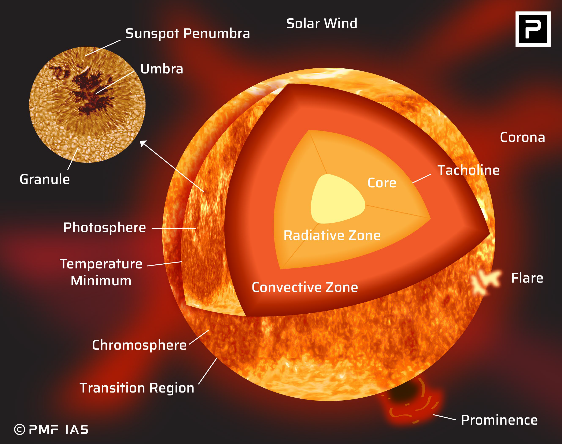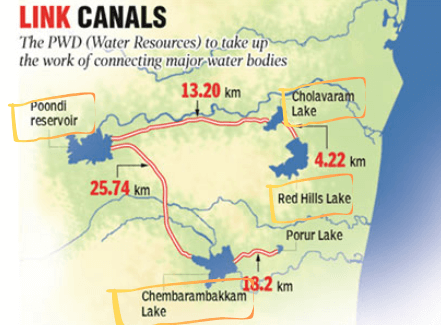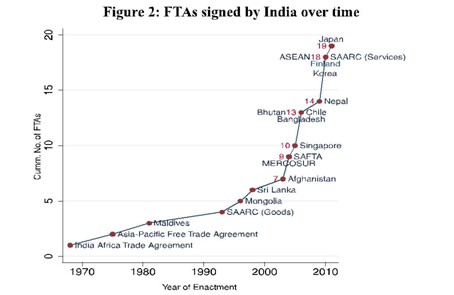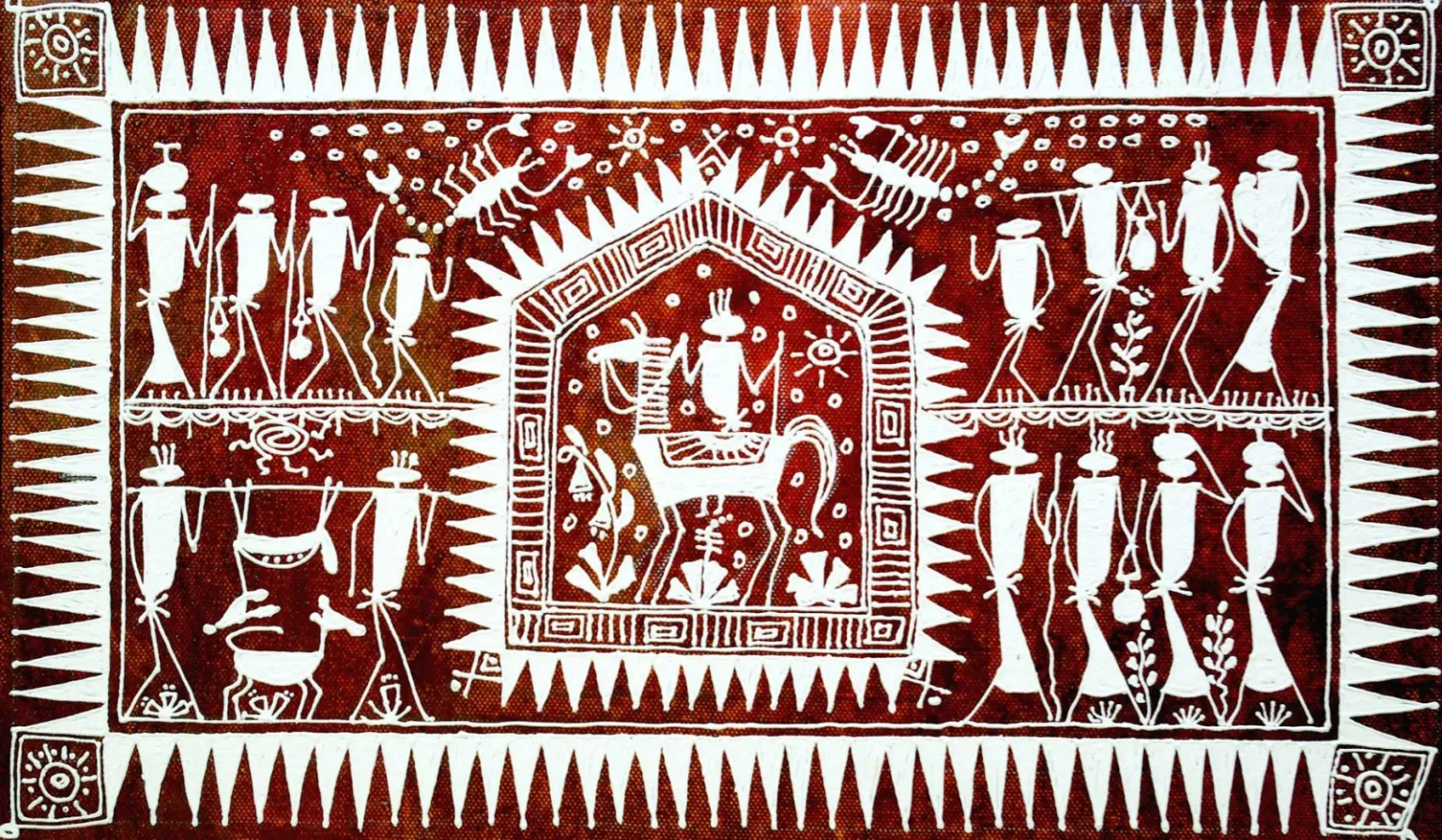
Aditya L-1 Mission
Subscribers of "Current Affairs" course can Download Daily Current Affairs in PDF/DOC
Subscribe to Never Miss an Important Update! Assured Discounts on New Products!
Must Join PMF IAS Telegram Channel & PMF IAS History Telegram Channel
- Context (PIB): Aditya-L1, India’s first solar mission, will reach its destination, Lagrange Point 1, early next month.
- Aditya-L1 was launched by ISRO using Polar Satellite Launch Vehicle (PSLV) XL.
- Aditya-L1 spacecraft will be inserted into a halo orbit around the L1 point of the Sun-Earth system.
- It will be placed about 1.5 million km from the Earth (covering only 1% of the distance between the Earth and the Sun)
- It will collect data for five years by continuously observing the Sun.
- ISRO will become the third space agency after NASA and the European Space Agency (ESA) to place an observatory at the L1 point between the Earth and the Sun.
Objectives of Aditya-L1 Mission
- To study the solar atmosphere, which includes corona, chromosphere, and photoshere.
- To examine solar emissions, including solar winds, flares, and Coronal Mass Ejections (CMEs), and see how they drive space weather.
Solar Atmosphere
Solar Emissions
|

Importance of Studying the Sun from Space
- Every planet, including Earth, evolves, and this evolution is governed by its parent star, i.e., the Sun.
- The solar weather affects the entire solar system weather. Variations in this weather can change the orbits of satellites or shorten their lives, interfere with or damage onboard electronics, etc.
- Studying the Sun helps track and predict the impact of Earth-directed storms.
- The sun’s thermal and magnetic phenomena are of extreme nature and cannot be studied in the lab.
- The Earth’s atmosphere is a protective shield that blocks harmful radiations like UV rays. So, studying the Sun from the Earth can’t provide a complete picture.
L1 (Lagrange 1) Point: Location Around which Aditya L-1 Spacecraft will be Placed
- A Lagrange point is a point in space where the gravitational forces of two large bodies (such as the Sun and the Earth) balance the centrifugal force experienced by a smaller object (such as a satellite), allowing it to remain ‘fixed’ in relation to the larger bodies.
- For any two celestial bodies, there are five Lagrange points (L1 to L5).
- Of the five Lagrangian points between the Earth and the Sun, there are:
- Three unstable points (L1, L2, & L3): If disturbed, objects placed at these points will drift away and require constant adjustments to stay in position.
- Two stable points (L4 & L5): Objects at these points orbit around these points; do not drift away.

What is Halo Orbit?
- A spacecraft can orbit around an unstable Lagrange point with a minimum use of thrusters for stationkeeping. Such an orbit is known as a halo orbit.
- It is different from a usual orbit (like the orbit of Earth around the Sun) because the unstable Lagrange point doesn’t exert any attractive force on its own.
Why is the Halo Orbit of L-1 Point Chosen for Placing the Aditya L-1 Spacecraft?
- A satellite in the halo orbit around the L1 point can continuously view the Sun without occultation/eclipses.
- Every geomagnetic storm from the Sun that heads towards Earth passes through L1, so a satellite in the halo orbit can track these storms and predict their impact.
- Satellites placed at Lagrange points can remain in a fixed position with minimal fuel consumption.
- These points are the ‘parking spots’ for spacecraft
|
Polar Satellite Launch Vehicle (PSLV) XL: The Launch Vehicle of Aditya L-1 Spacecraft
- PSLV is an indigenously developed expendable launch system.
- PSLV was developed in the 1990s by ISRO to place satellites in polar and near polar (e.g. sun-synchronous orbit) Lower Earth Orbits. e.g., Astrosat (India’s first space observatory).
- However, several PSLV missions successfully sent satellites toward geosynchronous transfer orbits over the last decade. e.g. Chandrayaan-1 (India’s first lunar probe) and Mars Orbiter Mission or Mangalyaan (India’s first interplanetary mission).
- It can fly in different configurations depending on the mass of its payload and the target orbit.
- PSLV is a four-stage launch vehicle.
- The first and third stages are solid-fuelled.
- The second and fourth stages are liquid-fuelled.
- The second stage engine, Vikas, is a derivative of France’s Viking engine.
- It is called the ‘workhorse of ISRO’ because it has the highest number of successful launches.
- The PSLV XL variant has six rocket strap-on motors to augment the thrust provided by its first stage.
|
How will Aditya-L1 Reach the Halo Orbit Around the L1 Point?
- Aditya L1 is launched from SatishSriharikota to Low-earth Orbit.
- It stayed in Earth-bound orbits for 16 days, undergoing orbital adjustment maneuvres to leave Earth’s Sphere of Influence (SOI).
- Subsequently, Aditya-L1 underwent a Trans-Lagrangian1 insertion (TL1I) manoeuvre, marking the beginning of its 110-day trajectory to the destination around the L1 Lagrange point.
- After the TL1I, ISRO found the trajectory errors that needed correction. So, TCM was performed.
- Upon arrival at the L1 point, another manoeuvre will bind Aditya-L1 to a Halo orbit around L1 (a balanced gravitational location between the Earth and the Sun).
Earth’s sphere of influence (SOI)
|
Trajectory Correction Manoeuvre (TCM)
- TCM (or Trim Manoeuvre) is a manoeuvre used to correct a spacecraft’s trajectory.
- TCM ensures a spacecraft arrives at its destination on time with the correct velocity and orientation.
- It can be performed at any point in a mission but is typically done during the cruise phase.
- TCM is performed by firing the spacecraft’s engines for a period of time. The direction and duration of the burn will depend on the desired change in trajectory.
- TCMs are required only in deep space missions.
|
Liquid Apogee Motor (LAM)
- Liquid Apogee Motor (LAM), identical to the one used in the Mars and Chandrayaan missions, is used for Aditya L1’s orbital adjustment maneuvres.
- Once Aditya L1 spacecraft exits the Earth’s SOI and heads toward its destination, the L1 Point, the LAM will shut down.
- LAM will be restarted as Aditya L1 closes to its destination.
- It will again perform orbital adjustment maneuvres and place Aditya L1 in the desired halo orbit at L1.

Payloads of Aditya-L1 Mission
- There are seven payloads on board the Aditya-L1 Mission, with four for remote sensing of the Sun and three for in-situ observation.
|
Payload |
Capability |
|
Remote Sensing Payloads |
|
| Visible Emission Line Corona-graph (VELC)
(Main Payload) |
Solar corona imaging |
| Solar Ultraviolet Imaging Telescope (SUIT) | UV imaging of solar photosphere and chromosphere |
| Solar Low Energy X-ray Spectrometer (SoLEXS) | Study X-ray flares |
|
In-situ Payloads |
|
| Aditya Solar wind Particle EXperiment (ASPEX) | Study the solar wind and energetic ions |
| Plasma Analyser Package for Aditya (PAPA) | Study the solar wind and energetic ions |
| Advanced Tri-axial High-Resolution Digital Magnetometers | Study in-situ magnetic field |




![PMF IAS Environment for UPSC 2022-23 [paperback] PMF IAS [Nov 30, 2021]…](https://pmfias.b-cdn.net/wp-content/uploads/2024/04/pmfiasenvironmentforupsc2022-23paperbackpmfiasnov302021.jpg)











